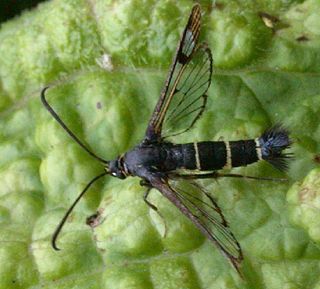
The Sesiidae or clearwing moths are a diurnal moth family in the order Lepidoptera known for their Batesian mimicry in both appearance and behaviour of various Hymenoptera.

The Hepialidae are a family of insects in the lepidopteran order. Moths of this family are often referred to as swift moths or ghost moths.
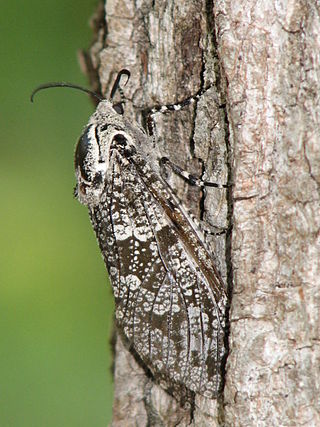
The Cossinae are the nominate subfamily of the Cossidae. The caterpillars of several Cossinae species, such as the carpenterworm and the goat moth, are significant pests. On the other hand, in Chile the caterpillars of the Chilean moth are collected on a commercial scale for sale as fishing bait and terrarium pet food; they are usually called "butterworms" in international trade.

The Saturniinae or saturniines are a subfamily of the family Saturniidae. They are commonly known as emperor moths or wild silk moths. They are easily spotted by the eyespots on the upper surface of their wings. Some exhibit realistic eye-like markings, whilst others have adapted the eyespots to form crescent moon or angular shapes or have lost their wing scales to create transparent windows. They are medium to very large moths, with adult wingspans ranging from 7.5 to 15 cm, in some cases even more. They consist of some of the largest sized Lepidoptera, such as the luna moth, atlas moth, and many more. The Saturniinae is an important source of wild silk and human food in many different cultures.

Cisthene is a genus of lichen moths in the family Erebidae. The genus was erected by Francis Walker in 1854.

Digama is a genus of moths in the family Erebidae described by Frederic Moore in 1858. It is distributed in South Africa, China, throughout India, Sri Lanka, Myanmar and Australia.

Homoeocera is a genus of moths in the subfamily Arctiinae The genus was erected by Cajetan Felder in 1874.

Erebus is a genus of moths in the family Erebidae.
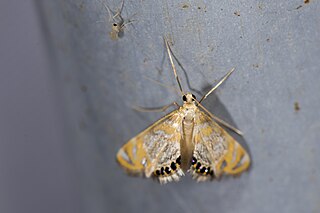
Nymphicula is a genus of moths of the family Crambidae.
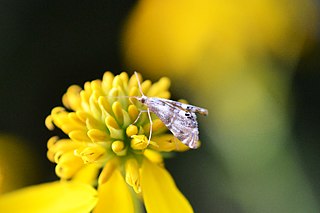
Petrophila is a genus of moths of the family Crambidae. The genus was described by Lansdown Guilding in 1830.
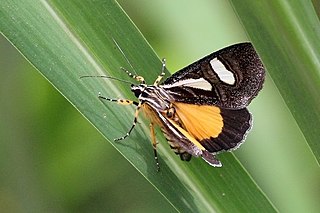
Agoma is a monotypic moth genus of the family Noctuidae erected by Sergius G. Kiriakoff in 1977. Its only species, Agoma trimenii, or Trimen's false tiger, was first described by Rudolf Felder in 1874. It is known from most countries of subtropical Africa.
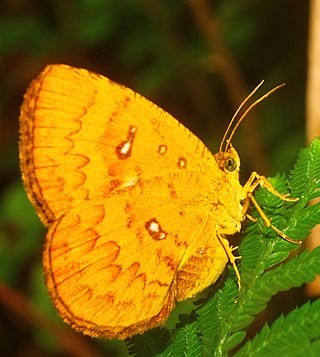
Callidula is a genus of moths of the family Callidulidae.

The rice moth is a moth of the family Pyralidae. This small moth can become a significant pest. Its caterpillars feed on dry plantstuffs such as seeds, including cereals. Other recorded foods are flour and dried fruits.
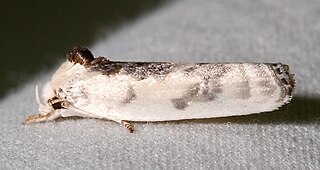
Antaeotricha is a genus of moths. It is the largest genus in the subfamily Stenomatinae, numbering over 400 species in the Western Hemisphere.

Choreutis is a moth genus. It belongs to the metalmark moths, and therein to subfamily Choreutinae. Of these, it is the type genus. The genus was described by Jacob Hübner in 1825.
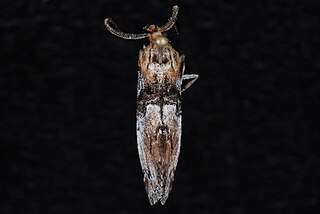
Jocara is a genus of snout moths. It was described by Francis Walker in 1863.
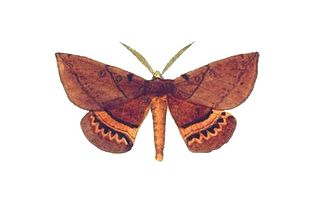
Chelepteryx chalepteryx, the white stemmed wattle moth or white-stemmed acacia moth, is a moth of the family Anthelidae. The species was first described by Rudolf Felder in 1874. It is found in Australia.

Scythris sinensis is a moth of the family Scythrididae first described by the Austrian entomologists Baron Cajetan von Felder and Alois Friedrich Rogenhofer in 1875. The moth is found in Asia, Europe and North America.


















